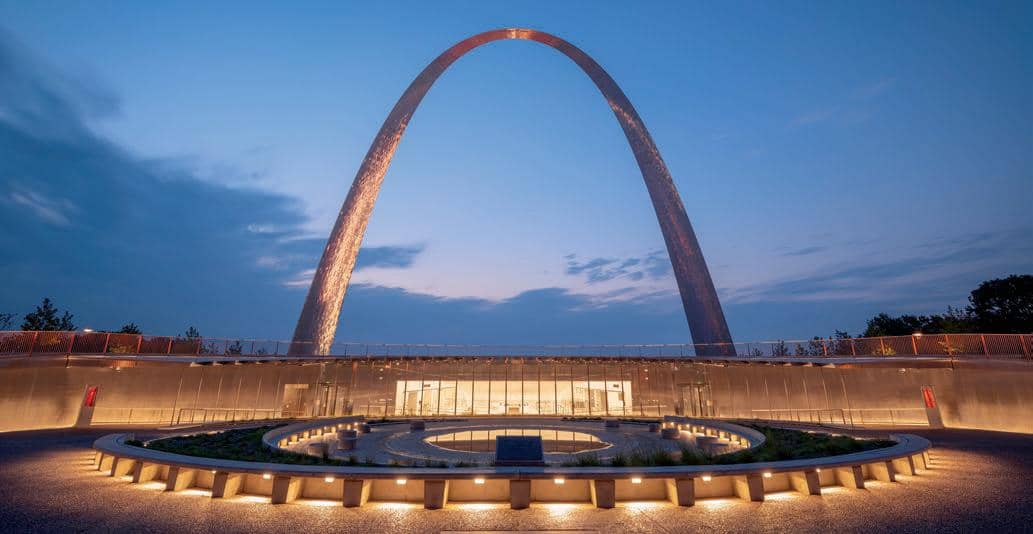
Before Dr. Robert Moore (RIGHT) became an educator at Washington University in St. Louis, he was a historian who worked for the National Park Service for 40 years. He enjoys doing historical research and using architectural drawing programs to create 3-D computer models of past buildings and landscapes. He also spends time hiking in the woods and watching animals and birds in their natural habitats. Dr. Moore shared his thoughts about life on the westward trails and his long career at Gateway Arch National Park. The park was founded to commemorate the role of St. Louis in the westward expansion of the United States during the 1800s.
What got you interested in history?
I was born in Utica, New York. The Oriskany Revolutionary War battle happened not far from where I lived, and my family visited the battlefield and the museum. You could almost imagine the conflict that happened there. I also spent a lot of time with my grandfather. He was a soldier in World War I and a carpenter who was interested in old buildings. All those things made me curious about people who lived a long time ago. What did they eat? How did they dress? How were the times they lived in different from the times I was living through?
What made you focus on westward expansion?
This story is from the October 2023 edition of Cobblestone American History Magazine for Kids.
Start your 7-day Magzter GOLD free trial to access thousands of curated premium stories, and 9,000+ magazines and newspapers.
Already a subscriber ? Sign In
This story is from the October 2023 edition of Cobblestone American History Magazine for Kids.
Start your 7-day Magzter GOLD free trial to access thousands of curated premium stories, and 9,000+ magazines and newspapers.
Already a subscriber? Sign In

Putting the Pieces Together
Americans needed to begin to put the past behind them, come together, and plan for the future in the spring of 1865. But Abraham Lincoln, the man best equipped to lead them and who had hoped to restore the country as smoothly and peacefully as possible, had been assassinated.

LAST SHOTS
The last Confederate forces in the Civil War didn’t surrender in the spring of 1865 or on a battlefield.

AND IN OTHER 1865 NEWS
A group of African Americans stop at the White House’s annual public reception on January 1, where they shake hands with President Abraham Lincoln.

A Plot to Kill President the
For several months, actor John Wilkes Booth’s band of conspirators had plotted to capture President Abraham Lincoln and hold him hostage in exchange for Confederate prisoners.

Let the Thing Be Pressed
In June 1864, Union Lieutenant General Ulysses S. Grant began a nearly 10-month campaign in Virginia.

HEALING THE NATION
President Abraham Lincoln took the oath of office for the second time on March 4, 1865.

A Helping Hand
The spring season is hard in any agricultural society. Plants and animals are too small to eat.

WAR SHERMAN-STYLE
As far as Union Major General William T. Sherman was concerned, the Civil War had gone on long enough.

PEACE TALKS
The fall of Fort Fisher made clear that the Confederacy’s days were numbered. Southerners were tired and hungry.

FORT FISHER'S FALL
Outnumbered Confederate soldiers inside Fort Fisher were unable to withstand the approach of Union troops by land and the constant Union naval bombardment from the sea.